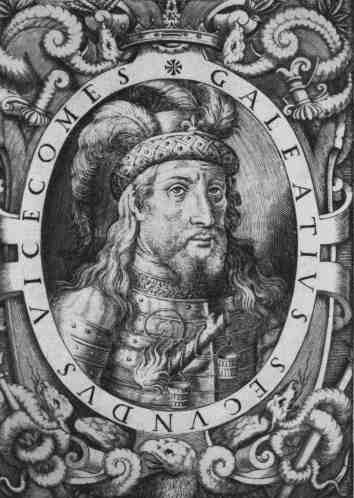Galeazzo II Visconti was a second son of Stefano Visconti and Valentina Doria. His parents had 3 sons: Matteo II, Galeazzo, and Bernabò. After Stefano’s passing in 1327, Galeazzo became Lord of Alessandria, Alba, Asti, Como, Tortona, Novara, Pavia, Vercelli and, together with the siblings Matteo II and Bernabò, co-Lord of Milan. A noble Italian family, the Visconti of Milan rose to power during the Middle Ages after Ottone Visconti, Archbishop of Milan and the first of Visconti line, had achieved the complete control over the city in 1277. Galeazzo II left a versatile legacy: a legacy of sinister torture, artistic legacy, and political legacy. He was a grandfather of Valentine Visconti and through her, an ancestor of King Louis XII of France and King François I of France.
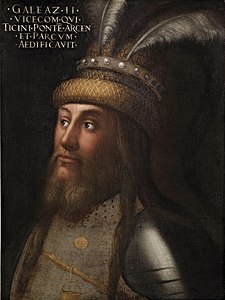
Galeazzo was born on the 14th of March 1320 in Milan. We know little about his childhood; he grew up with both Matteo and Bernabò. At 23, Galeazzo went on a pilgrimage to Jerusalem following Count William II of Hainaut, who later made him a knight in the Church of the Holy Sepulchre. Galeazzo then lived in Flanders, but soon he returned to Milan. Smart and cunning, Galeazzo was inclined to plotting from his early youth. In 1346, he and his brothers conspired against their uncle Luchino Visconti, Lord of Milan at the time, and Luchino’s brother, Archbishop Giovanni Visconti, but the siblings were discovered and expelled from the city.
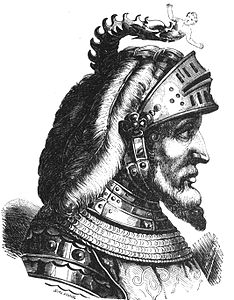
Luchino passed away in 1349, and the three siblings were recalled to Milan. Galeazzo was given a palace in the Porta Orientale district. Following the death of Archbishop Giovanni in 1354, the brothers inherited the power over the city. Galeazzo’s own domains were the afore-mentioned western lands, close to the Savoy holdings. None of the siblings liked that Milan was jointly governed by them by means of electing one of them the podestà (a chief magistrate in a medieval Italian municipality) in turn. Genoa constituted their common possession.
Power causes problems of morality. The thirst for power made Galeazzo and Bernabò combine their forces to arrange a coup d’état against Matteo. In 1355, Matteo II Visconti died after a dinner when he was presumably poisoned by his siblings. In the same year, Galeazzo obtained the Imperial vicariate on the occasion of the coronation of Emperor Charles IV of Luxembourg in Milan. As he sided with the emperor, Galeazzo had a conflict with Giovanni II Palaeologus, Marquis of Montferrat, which ended with the capture of Vercelli and Pavia in 1360. Galeazzo obtained from the emperor the reconfirmation of the imperial vicariate for his holdings.
His uncle Giovanni arranged marriages for Galeazzo and Bernabò. On the 28th of September 1350 at Rivoli, Galeazzo married Bianca de Savoy, who was the daughter of Aymon, Count de Savoy, and Yolande Palaeologina of Montferrat. Bernabò married a scion of the powerful Scaligeri family of Verona, whose holdings had a common border with the Visconti dominions – she was Beatrice Regina della Scala, daughter of Mastino II, Lord of Verona, and Taddea da Carrara. These unions were political to strengthen the Visconti state and gain more connections.
Galeazzo had mistresses like most men. When Luchino Visconti was alive, he was suspected of being the lover of Luchino’s wife – Isabella Fieschi. Galeazzo was sixteen years Bianca’s senior, but they had a harmonious marriage based on duty and mutual respect. In a few weeks after their wedding, Galeazzo attempted to conquer Bologna, but due to his fragile health, he had to terminate his military adventures. Bianca and Galeazzo had 3 children: Gian Galeazzo born in 1351, Maria born in 1352 (died at 10 in 1362), and Violante born in 1354. He was not faithful and fathered a son and a daughter – Cesare and Beatrice – with his mistress Malgarola da Lucino.
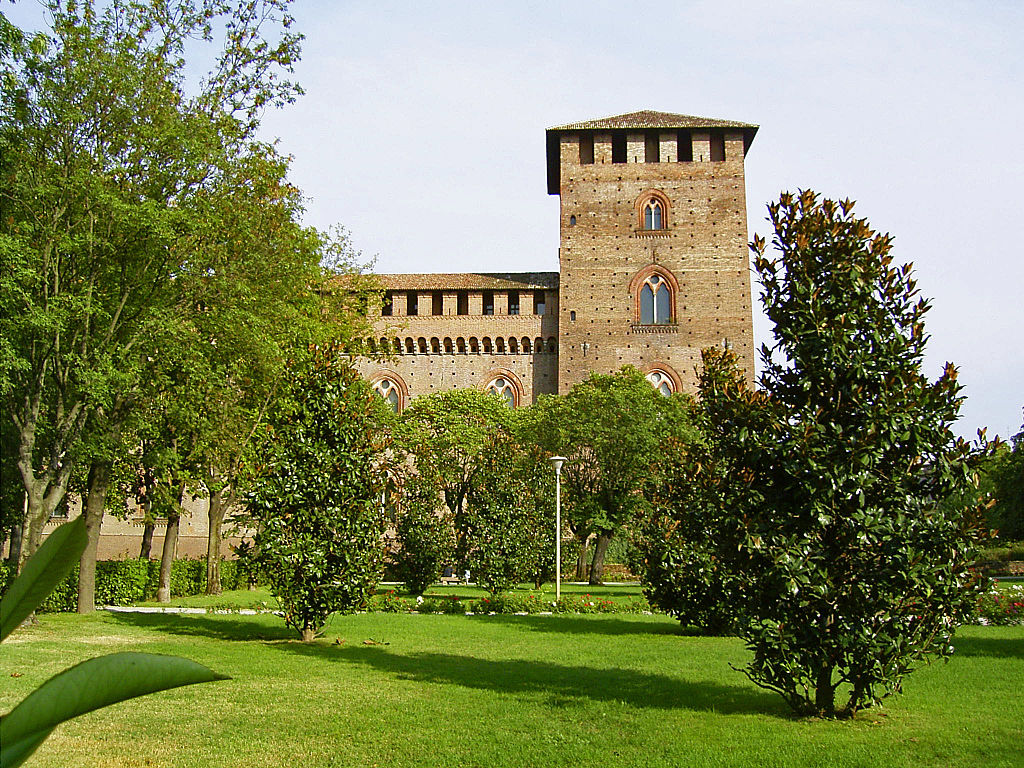
Galeazzo strove to ensure his independence from his brother Bernabò. Most likely falsely, the Visconti family claimed to be descended from the ancient Kings of Lombardy and those of Italy. Galeazzo moved his court to Pavia, where it soon became thronged with artists. In fact, the construction of the famous Visconti Castle – the seat of his court – had commenced already in a few months after the city’s annexation. It underscored the family’s advertised descent from monarchs of Lombardy. Centuries ago, Pavia was the capital of the kingdom Lombardy and that of Italy. In this castle, Galeazzo and his spouse, Bianca, surrounded themselves with writers and artists, including Francesco Petrarca (the anglicized spelling of his name is Francesco Petrarch).
From 1359 to 1360, Pavia underwent a substantial urban renewal on Galeazzo’s orders. All the construction works were implemented to make the city grand and stress the connection with the kingdoms of Lombardy and of Italy. His architectural projects aided Galeazzo to legitimize his power and establish the continuity with the early medieval dynasties. Galeazzo’s splendid castle in Pavia quickly transformed into the political center of the Visconti dominions ruled by his branch of the family. From where, Galeazzo II Visconti created a complex web of diplomatic alliances.’
For the sake of his dynasty’s prestige, Galeazzo Visconti negotiated the marriage of his only legitimate son, Gian Galeazzo, to a French princess. The bride was Isabelle de Valois, who was the youngest daughter of King Jean II of France and his first wife, Bonne de Luxembourg; Isabelle was a sister to King Charles V of France known as the Wise (le Sage). The teenagers married on the 8th of October 1360 in Milan. Galeazzo paid the enormous sum of 500,000 gold florins to France that desperately needed this money due to the country’s treasury being depleted by the Hundred Years’ War. To raise the funds, Galeazzo taxed laymen and ecclesiastics heavily. The Visconti of Pavia received the county of Vertus as Isabelle’s dowry.
Therefore, Galeazzo enjoyed the support of the French monarchy. In spite of this, Galeazzo hedged his bets and also allied with England that could attack France again after Charles V had liberated the French lands that had previously been conquered by King Edward III of England. Galeazzo arranged a union for his daughter, Violante, with the third son of Edward III of England – Lionel of Antwerp, 1st Duke of Clarence. The 13-year-old Violante married the 29-year-old Lionel in a lavish and elaborate ceremony the Church of Santa Maria Maggiore (predecessor of the Cathedral of Santa Maria Nascente) in Milan, on the 28th of May 1368.
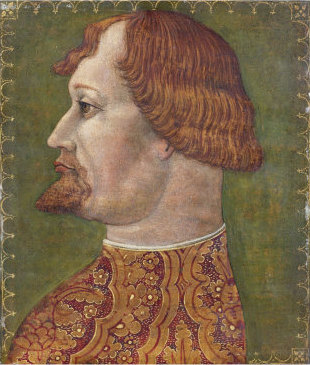
After several months of festivities, Lionel of Antwerp took ill and died. Galeazzo’s original plan to have alliances with both France and England was derailed by the axe of fate. At least Galeazzo, who was rich thanks to his excellent administration of his lands but greedy, obtained a large dowry from Edward III. There were rumors that Lionel was poisoned while in Italy at the behest of his father-in-law, Galeazzo, or Bernabò, but nothing could be proved. Galeazzo had no reason to get rid of Lionel, especially while the Englishman was in Lombardy. If Lionel was murdered, might have been perpetrated by Bernabò who detested his brother, wishing to be the only ruler of the Visconti lands. Over time, Bernabò proved that he was a tyrant.
The French alliance was in danger as well. Isabelle de Valois gave birth to Gian Galeazzo in 1366, Azzone in 1368, Valentine in 1371, and Carlo in 1374. However, Isabelle died in childbirth with Carlo in 1372. Galeazzo’s grandchildren were all born in Pavia. Two of his grandsons perished between 1374 and 1376. Azzone outlived him by two years; only Valentine would survive into adulthood. This situation must have worried Galeazzo II Visconti, and maybe he endeavored to persuade his son Gian Galeazzo to remarry. Gian would do so, but in two years after his father’s death when he would wed his first cousin – Caterina Visconti, Bernabò’s daughter.
In the battle of San Ruffillo of 1361, the Visconti troops of Bernabò were vanquished by the Imperials armies under Galeotto I Malatesta in his hope to regain Bologna. Meanwhile, Giovanni II of Montferrat hired English mercenaries (about 10,000 men), who had fought in France before, and enjoined them to plunder the Vercelli and Novara areas. Galeazzo deflected the attack and had Novara fortified. Bernabò was in general more involved in wars. In 1362, after the failed peace negotiations with Pope Urban V and due to the formation of an anti-Visconti league, Bernabò sent his armies against the Bishop of Rome’s allies, but they were both defeated.
Galeazzo’s relationship with his brother was tense to say the least, but Galeazzo once helped Bernabò. Fighting on several fronts, Bernabò needed to stop that. It was when Galeazzo offered to ensure the mediation of King Jean II of France to resolve the dispute with the Pope. Soon Galeazzo had to be involved in military affairs again: the Marquis of Montferrat sent his armies to devastate Novara and Pavia, as well as surrounding countryside. Galeazzo allied with Count Amadeus VI de Savoy who attacked Montferrat from the west and conquered Asti. The ruler of Montferrat was then captured and forced to pay his ransom of 180,000 gold florins.
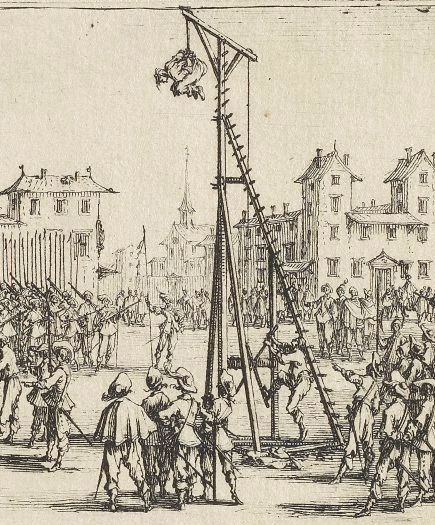
In the vicinity of Pavia, Galeazzo’s forces had to prevent the enemy from plundering the countryside. At the same time, Galeazzo discovered the theft from his treasury by some of his administrators, as well as the lack of commitment on the part of his soldiers. The rebellion in the city of Voghera put additional pressure on Galeazzo. As he needed to urgently restore the order in his domains, he resorted to torture and sentenced many to death.
In history, Galeazzo II is associated with a sinister legacy of brutal torture. He and Bernabò together introduced the Querasima torture protocol at the beginning of their dual reign in Milan. According to this protocol, a victim sentenced to death was tortured over a 40-day period, each torment aimed at causing maximum pain while keeping the condemned person alive. It featured a day of torture followed by a day of recuperation, and the awful procedure involved the rack, the wheel, flaying, cutting off facial features and limbs, eye-gouging, and the strappado (the victim’s hands are tied behind his back and suspended by a rope attached to the wrists).
The war continued. In 1363, the enemy took Corbetta and Magenta, and even captured as many as six hundred Milanese nobles. Galeazzo’s forces soon vanquished the foe, while his captain, Luchino dal Verme, recaptured most of the lost castles in the Novara, Tortona, and Pavia areas. The conflict between the Visconti brothers, the Pope, and Giovanni II of Montferrat ended with the peace treaty of 1364. The excommunications of Galeazzo and Bernabò were lifted.
The base of Galeazzo’s operations was the city of Pavia. The income from these lands helped him finance his martial projects. Galeazzo’s another campaign was against Pope Gregory XI, which started around 1370. A series of battles were fought between the papacy and members of the Visconti family, when Bernarbò and Galeazzo Visconti acted as allies, but it again ended with the signing of a new treaty. It was eventually revoked when Bernarbò allied with the Republic of Florence, which was a longstanding adversary of the papacy. The War of Eight Saints of 1375-78 between Pope Gregory XI and a coalition of Italian city-states led by Florence pulled the Visconti family – mostly forces of Bernabò – into more battles.

Galeazzo II Visconti strengthened and reorganized the Visconti state, responding masterfully to changes in late medieval political structures. His reign also served to set up his son’s future rule of Pavia. Gian Galeazzo also remembered his father’s role in Matteo’s demise. Matteo’s murder would years later instigate Gian Galeazzo to mastermind a coup d’état against his Uncle Bernabò, who nonetheless was a tyrant, in order to concentrate all the power in the hands of his branch of the Visconti family. The bloody legacy of homicide, at first taking the form of fratricide and then that of avunculicide, is a large part of the Visconti versatile legacy forged by Galeazzo II.
Furthermore, Galeazzo II was an enthusiastic patron of artists and poets, including Francesco Petrarca. His most commendable legacy is his commitment to the sponsorship and patronage of scholars and intellectual institutions. Galeazzo founded the University of Pavia. Together with his wife Bianca, he was responsible for the creation of the large Visconti library in the castle. Petrarca was a friend of both Galeazzo and Bianca; the illustrious humanist and scholar served as a tutor for his legitimate son. When he died on the 4th of August 1378, everyone was in deep mourning. Galeazzo II was interred in the Basilica of San Pietro in Ciel d’Oro in Pavia, Italy.
All images are in the public domain.
Text © 2021 Olivia Longueville

